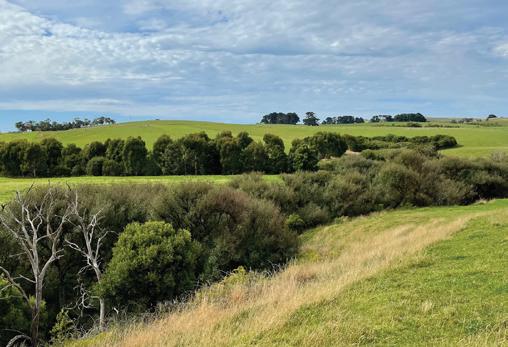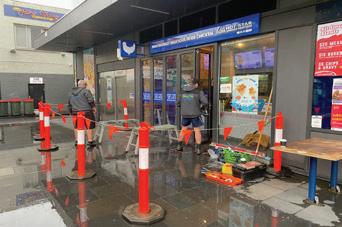
2 minute read
Last Willow gone from Agnes River
May 2023
West Gippsland Catchment Management Authority (CMA) is proud to have removed the last remaining stand of willow trees from the Agnes River – a first for the organisation and a win for the environment.
Advertisement
“Willows are a problem for rivers and removing them from 100% of the Agnes is a special milestone for the CMA,” said CEO Martin Fuller.
“The Agnes is a flagship river for our region because it runs into Corner Inlet and what happens along its length has a flow on effect for the world renowned wetland.”
West Gippsland CMA has just celebrated 25 years and the team has been chipping away at removing willows across the catchment since it was established in 1997.
Someone who has been on the ground since this project began is Project Delivery Officer, Richard (Richie) Allen who has worked with the CMA for over 20 years.
Richie describes himself as “just a small part of the team that gets great things done” and forms partnerships with landholders to map out required works and then creates an agreement to make them happen.
“In the early days there was a different mindset, so we chipped in and just did what we could. A few landholders came on board and the success spread like wild fire. Now people are queuing up to have works done because they see the benefits like how it’s much easier to manage their stock,” said Richie.
“Willows are not native trees and wildlife doesn’t live in them, so they’re not good for biodiversity or rivers.
They also divert the water, making the river wider, and have a massive leaf drop in one hit - which changes nutrients in the water.”
The next step after removing willows and weeds is planting the newly protected riverbanks. Richie and team will soon plant thousands of indigenous species using a mix of 30% eucalypts and the remaining understorey plants. This links habitat which benefits the river health and wildlife.
“To date, we have fenced and revegetated over 90% of the river. By the end of 2023-24, this will be 100% and I can see how the river is ‘reclaiming’ itself and wildlife is starting to return. I often see platypus in the early mornings and there are plenty of wombats in the area as we are creating good homes for them.”
Local landholders are also passionate about reconnecting habitat so that platypus and lyrebirds can return. They have even turned the number of trees they have planted into a bit of friendly neighbourly rivalry.
“There has been a fair bit of healthy competition in this last reach!” laughed Richie.
All of the positive works being done along the Agnes upstream ultimately flow down to benefit fish, birds and seagrass in Corner Inlet. The buffer created by weed removal, fencing and revegetation improves conditions for seagrass to flourish by reducing nutrient and sediment flowing into the inlet.
In his own time Richie loves going for a drive across West Gippsland with the family where he points out the trees he’s planted and how they have grown. This latest achievement is a great example of change on a landscape scale that will provide a lasting legacy he can enjoy with his kids and grandkids for years to come.
Mangroves Saltmarsh | DRIFT Media - Michael Green

Agnes River is on Gunuaikurnai Country and begins in the Strzelecki Ranges meandering its way into Corner Inlet near the town of Toora. It is well known for the Agnes Falls where the river cascades into a spectacular 59m drop into a deep picturesque gorge.



This large-scale restoration project is one of 19 Flagship Waterway projects funded as part of the Victorian Government’s $248 million investment over four years (2020-2024) to improve the health of waterways and catchments across regional Victoria. www.wgcma.vic.gov.au



This project is funded by the State Government as one of its Flagship Rivers. To date, the project has:
Fenced 78.5 kilometres of river frontage at 65 sites.

Planted 235,838 trees and shrubs to restore 237.63 hectares.
Undertaken weed control on 414,51 hectares at 218 sites.



















